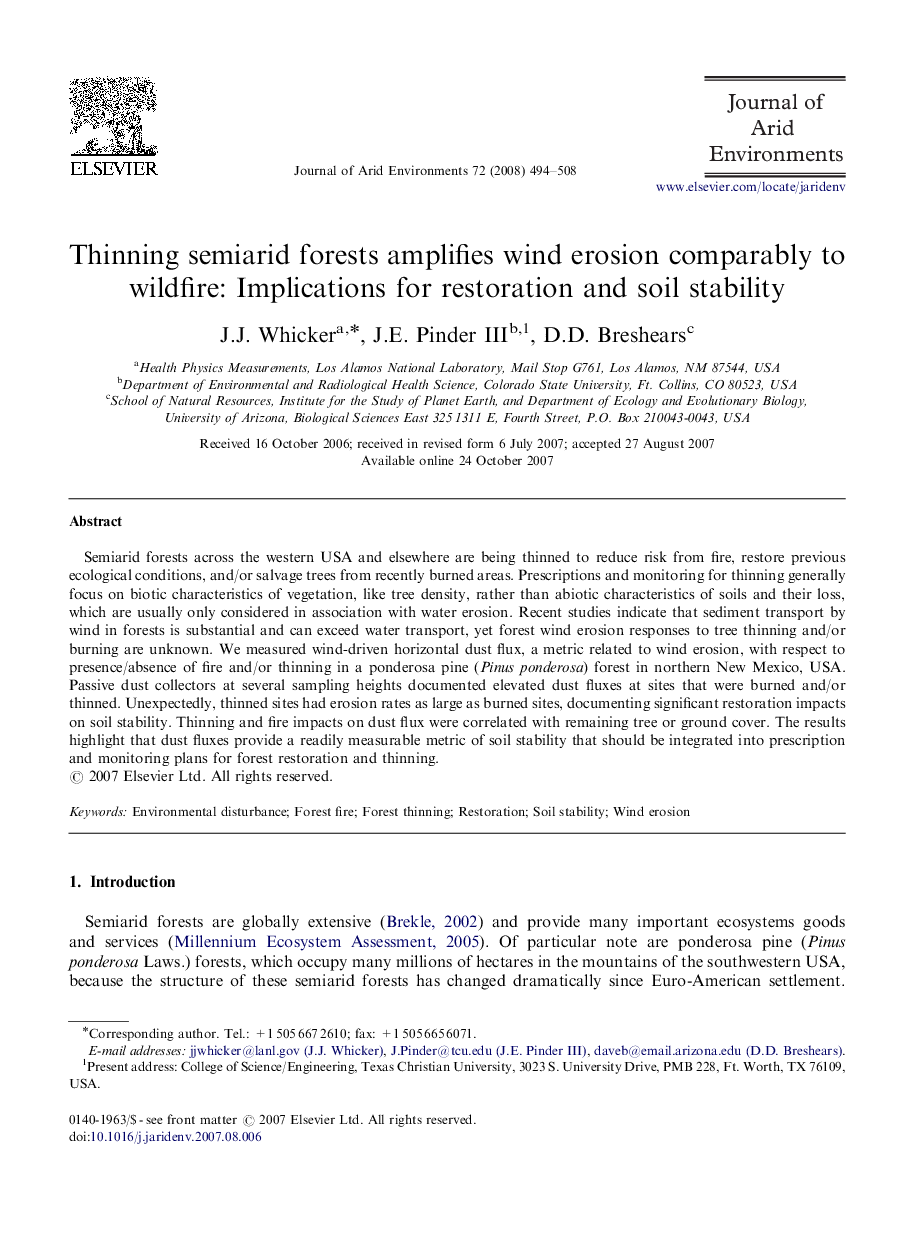| Article ID | Journal | Published Year | Pages | File Type |
|---|---|---|---|---|
| 4394212 | Journal of Arid Environments | 2008 | 15 Pages |
Abstract
Semiarid forests across the western USA and elsewhere are being thinned to reduce risk from fire, restore previous ecological conditions, and/or salvage trees from recently burned areas. Prescriptions and monitoring for thinning generally focus on biotic characteristics of vegetation, like tree density, rather than abiotic characteristics of soils and their loss, which are usually only considered in association with water erosion. Recent studies indicate that sediment transport by wind in forests is substantial and can exceed water transport, yet forest wind erosion responses to tree thinning and/or burning are unknown. We measured wind-driven horizontal dust flux, a metric related to wind erosion, with respect to presence/absence of fire and/or thinning in a ponderosa pine (Pinus ponderosa) forest in northern New Mexico, USA. Passive dust collectors at several sampling heights documented elevated dust fluxes at sites that were burned and/or thinned. Unexpectedly, thinned sites had erosion rates as large as burned sites, documenting significant restoration impacts on soil stability. Thinning and fire impacts on dust flux were correlated with remaining tree or ground cover. The results highlight that dust fluxes provide a readily measurable metric of soil stability that should be integrated into prescription and monitoring plans for forest restoration and thinning.
Related Topics
Physical Sciences and Engineering
Earth and Planetary Sciences
Earth-Surface Processes
Authors
J.J. Whicker, J.E. Pinder III, D.D. Breshears,
